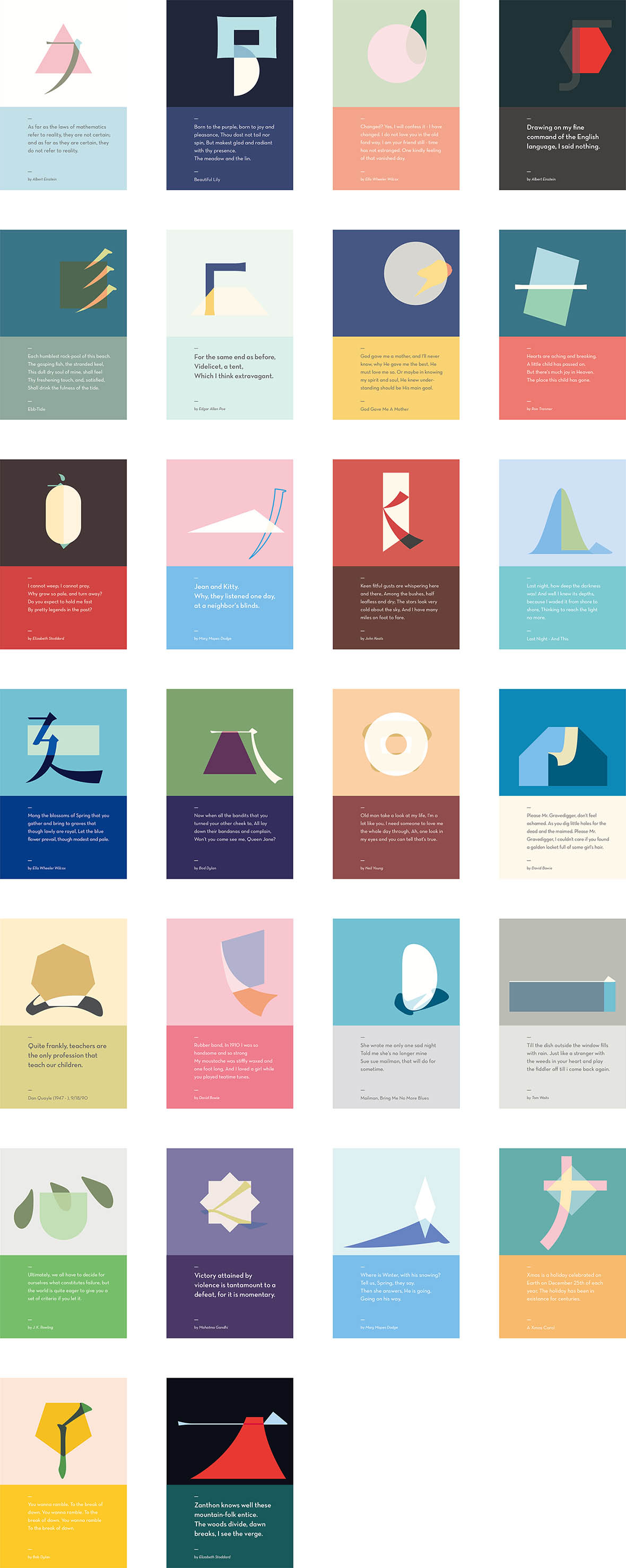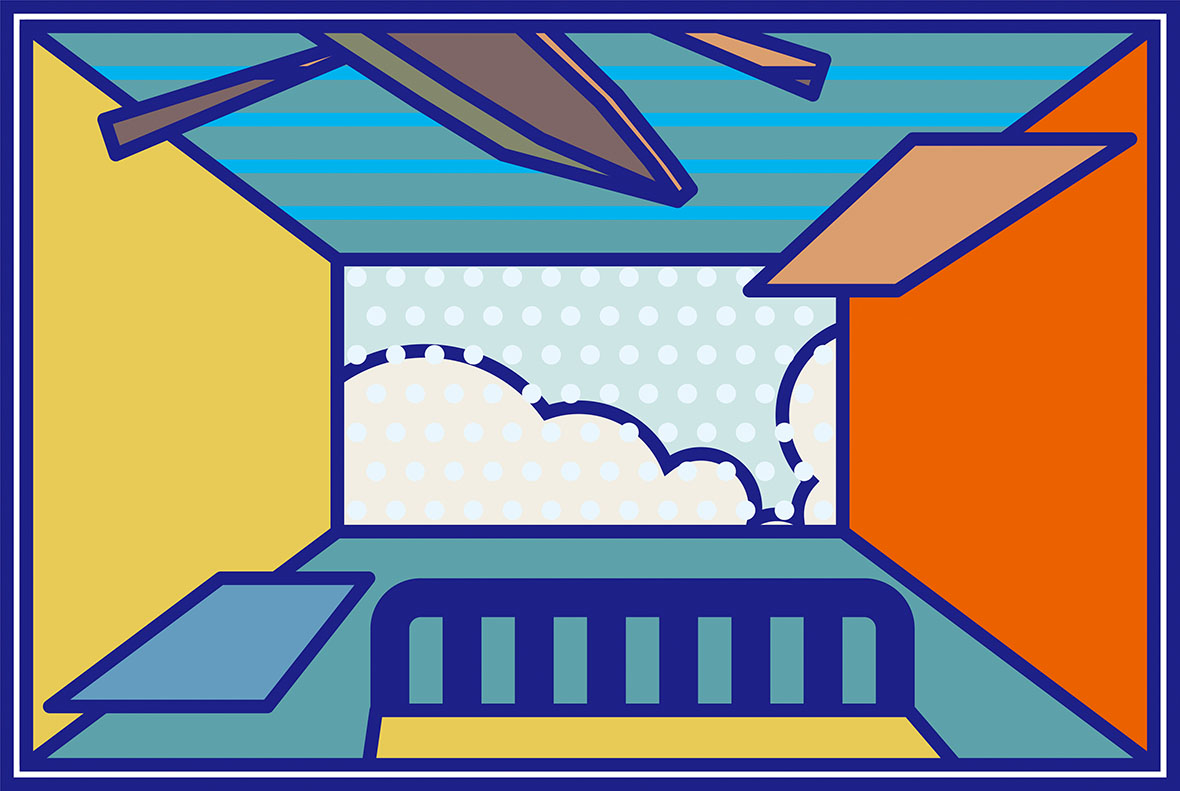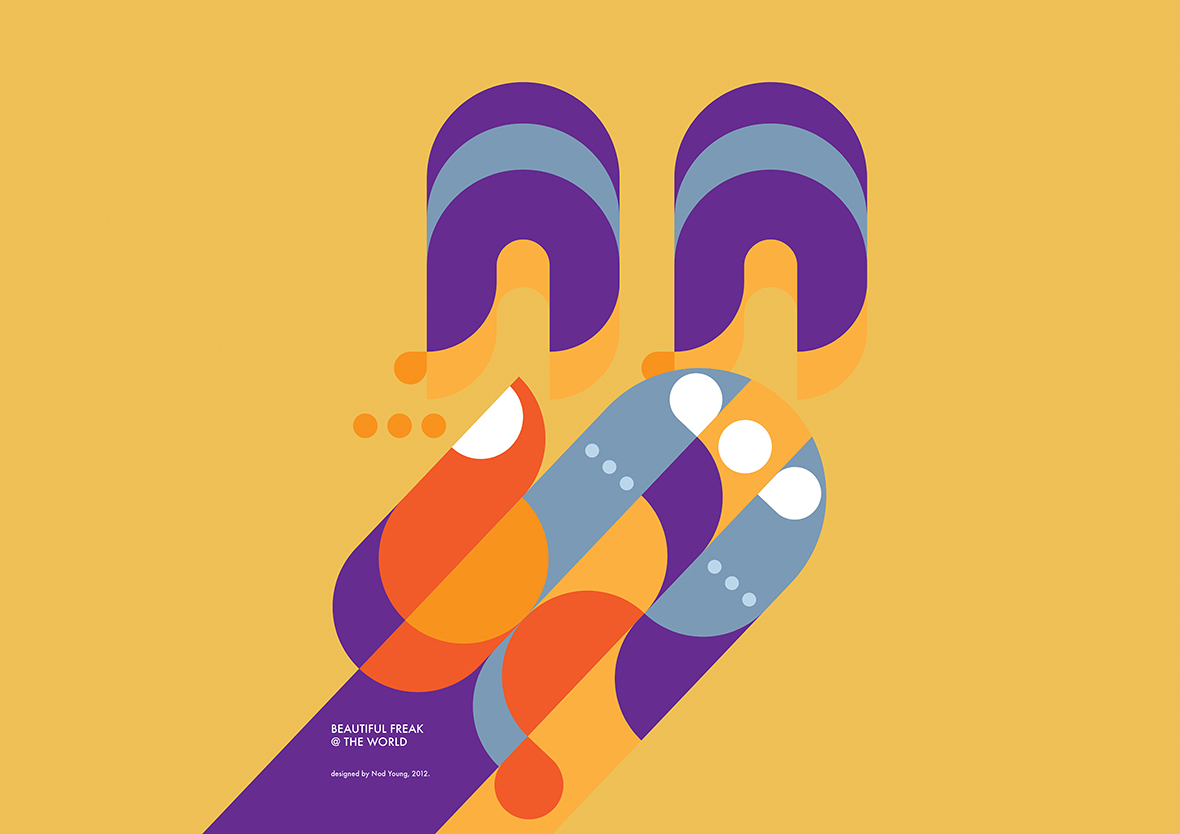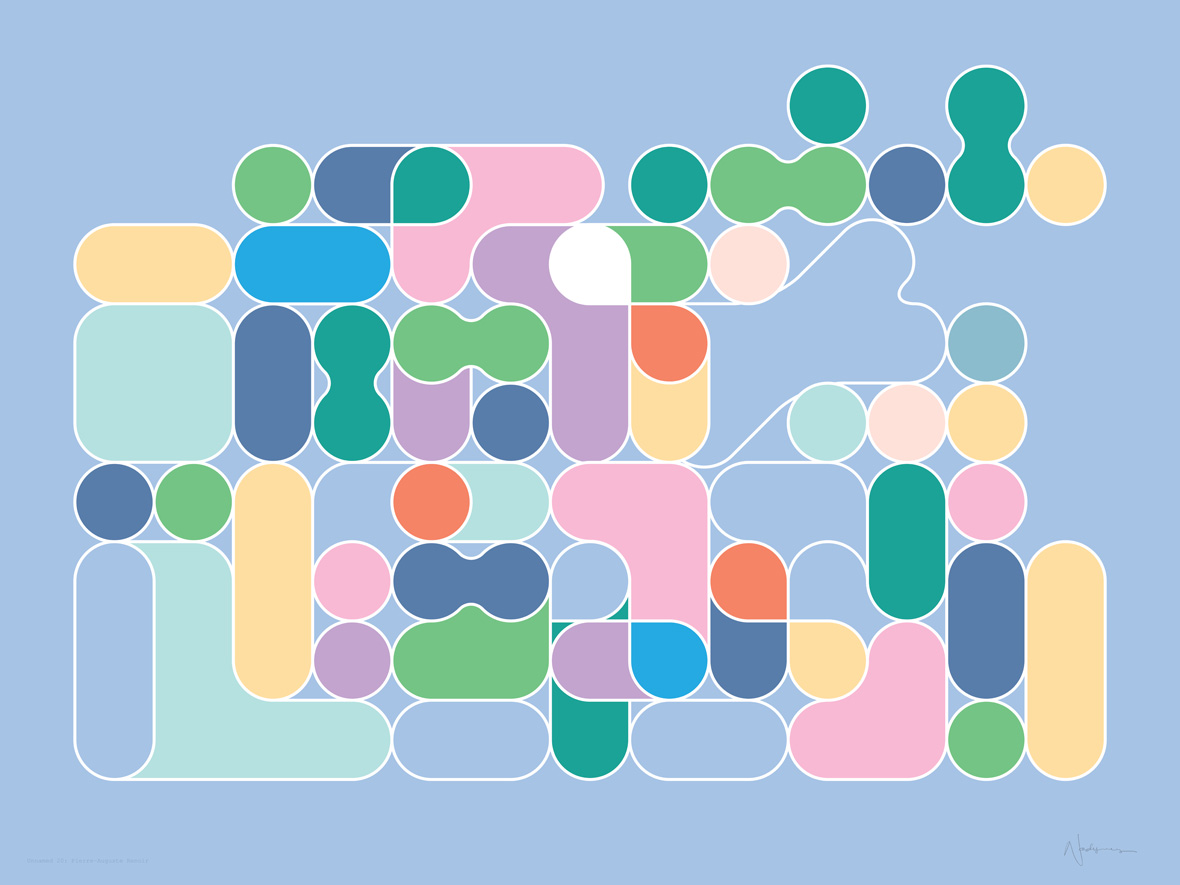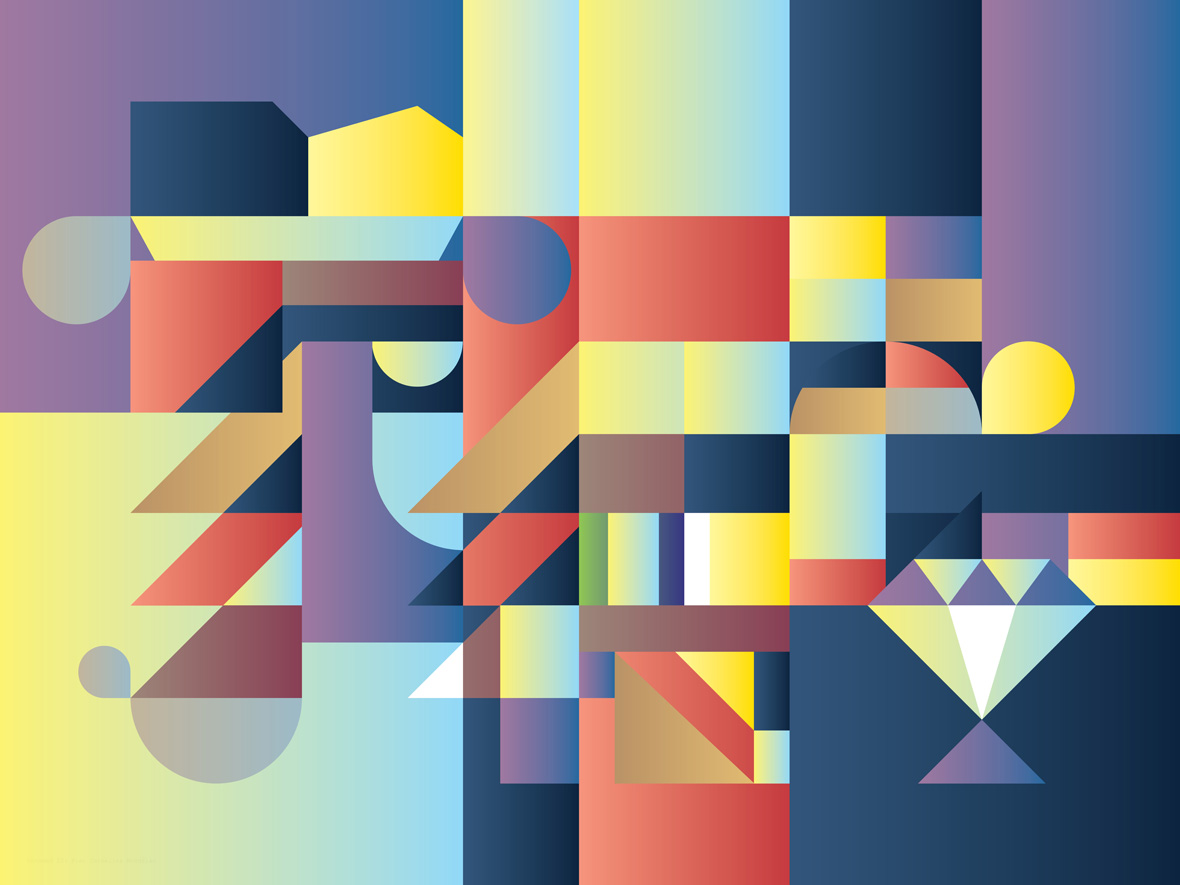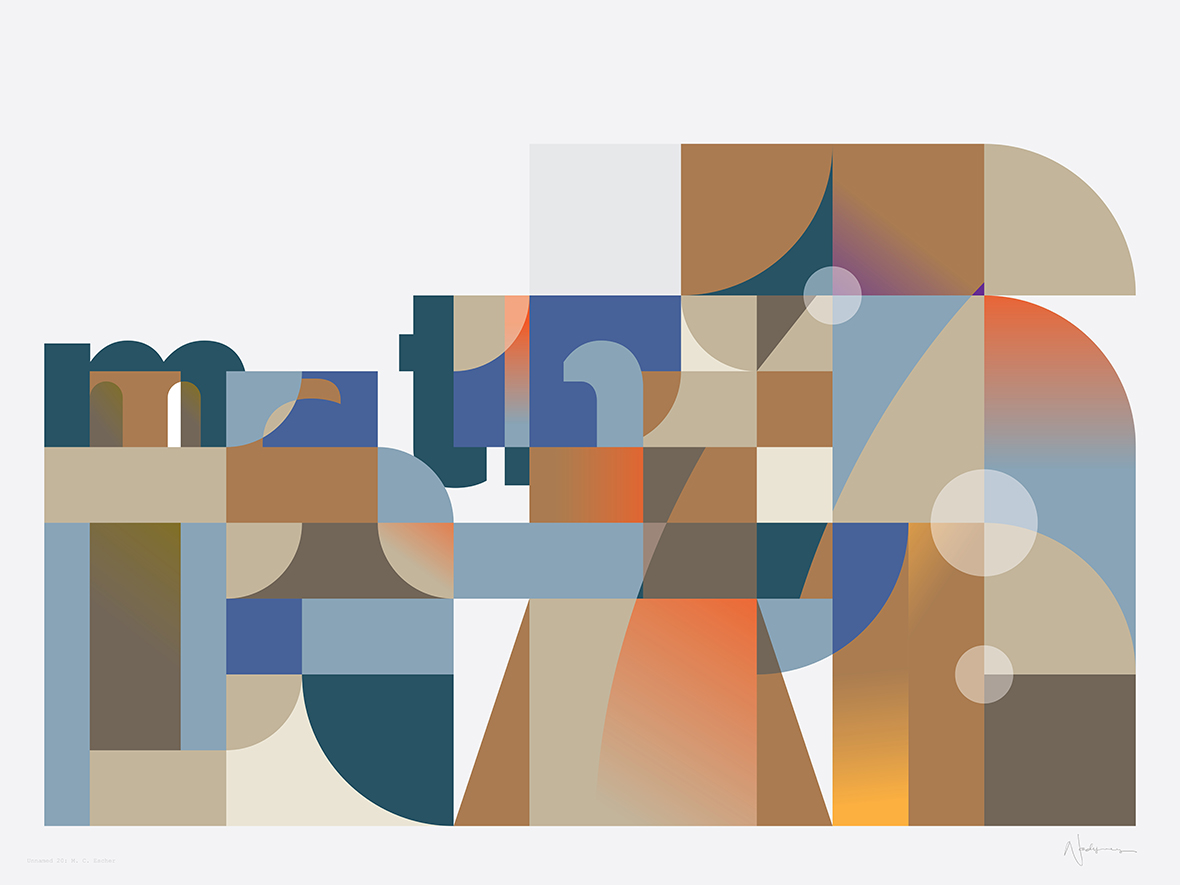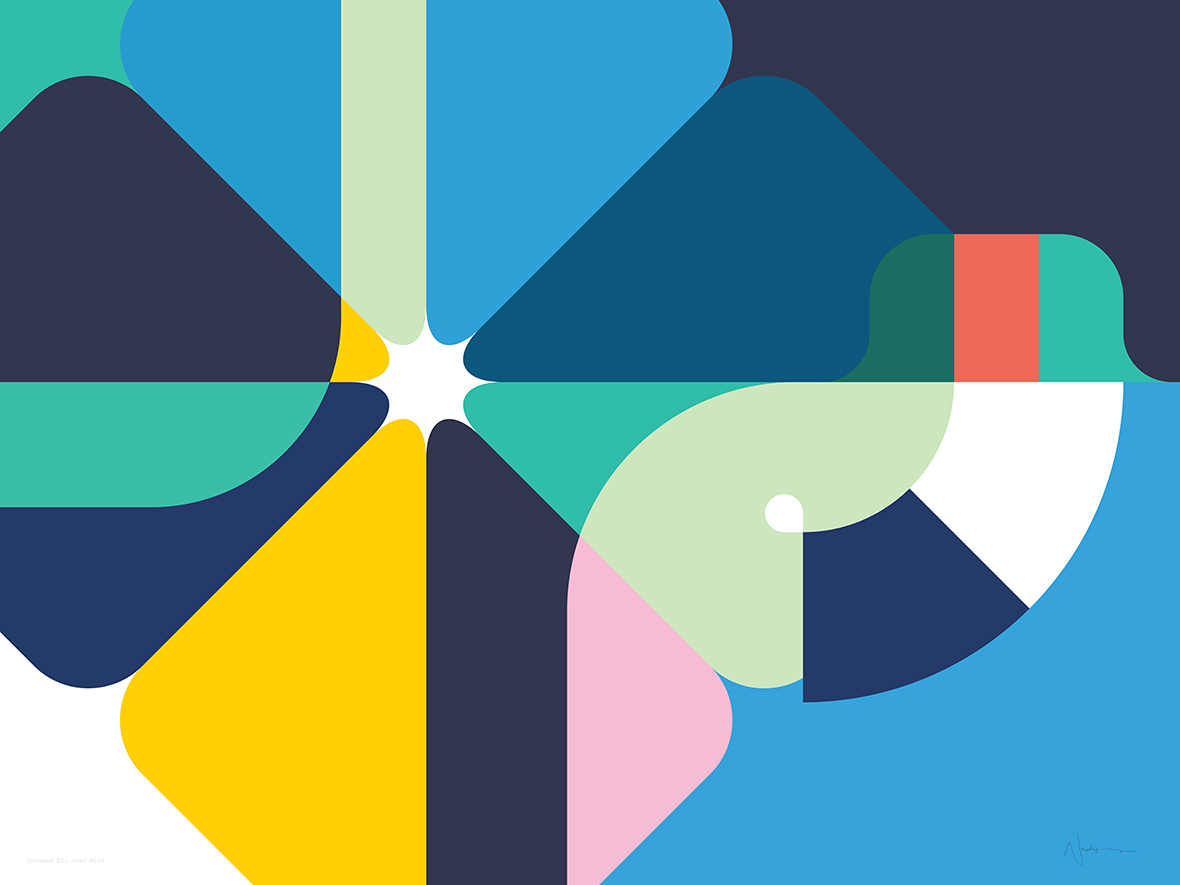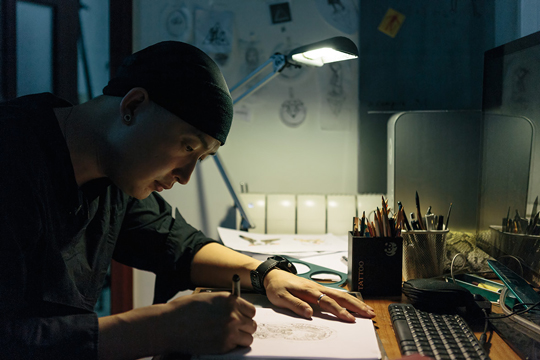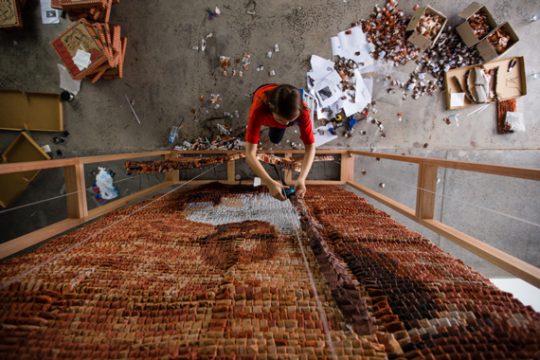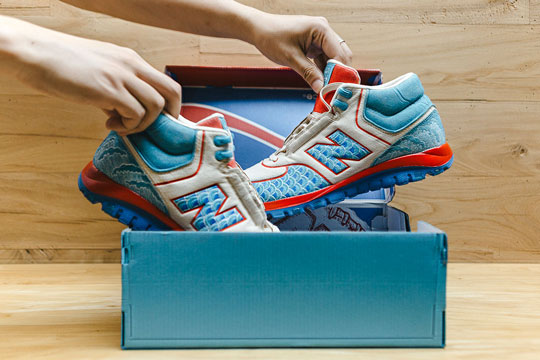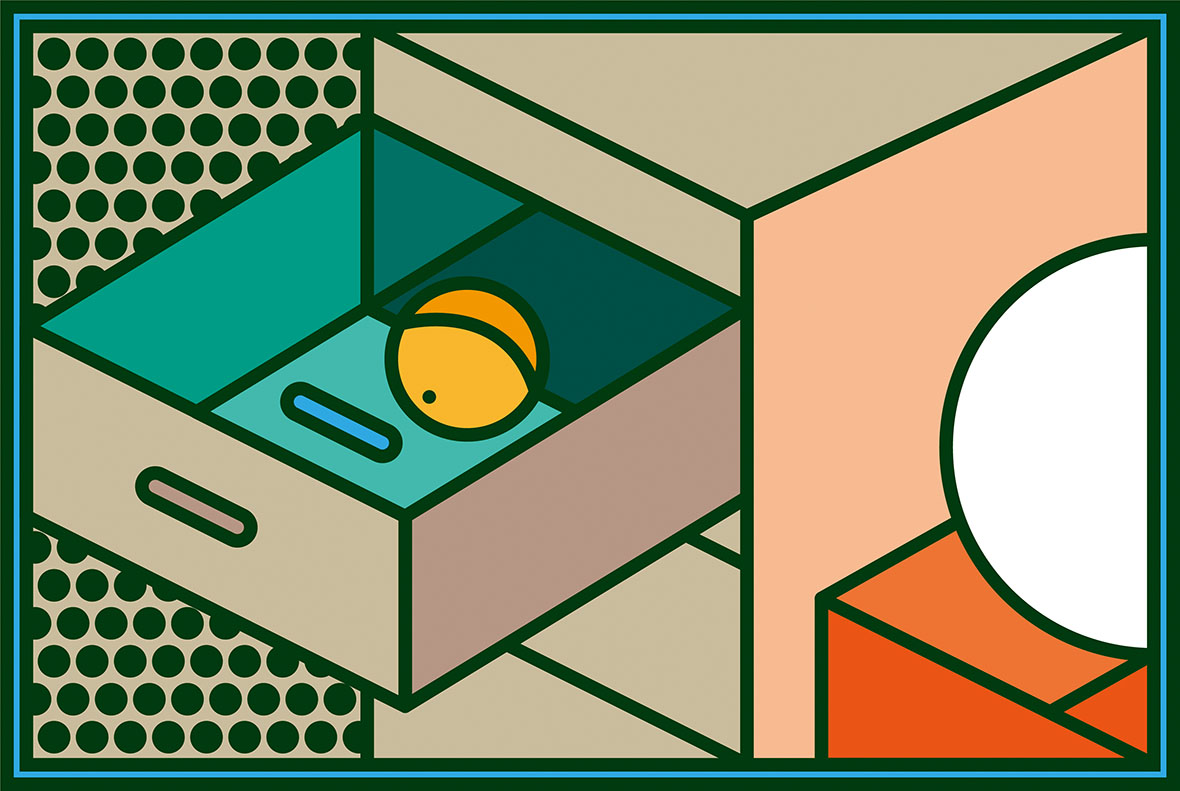
Nod Young is a Beijing-based designer and artist, who is also currently a partner at Tomeetyou Graphics. Young has a unique minimalist style whose geometric designs, while clean and abstract, also somehow manage to have an emotional resonance. His simple use of lines, shapes and patterns convey a calculated and balanced sense of wholeness, but contrast quite nicely with the looseness of his freeform elements.
Nod Young是居住在北京的设计师、艺术家,目前为吐毛球工作室的合伙人。他用克制的理性,创作具有情绪波动的感性作品。他的作品通常使用最简单最单纯的表达方式,几何为主,几乎不使用任何随意或是具有弹性的线条,以严谨甚至刻板做为限定。
When asked about his current state of mind, Nod replied at length, “I am annoyed by gentleness; I’m very attracted to strength and fierceness, but I’m actually quite gentle. It’s something I can’t change. For example, a lot of people want to have the strong build of a seasoned warrior, but they’re born into a body that is small and frail. That kind of dilemma you can’t resolve with exercise. So I feel that we need to accept our fates and quell some of our inner conflicts, while at the same time learn how to develop our natural skills and innate talents. I am not totally satisfied with the person that I am today, not only in my life but in my art as well. I feel that I’m too mild-mannered and self-restrained, but I hope that within my life’s plan, I’ve picked the right ways to express myself.”
我们在采访过程中问到 Nod 目前的状态,他说: “我其实讨厌温柔,我喜欢生猛,但自己偏偏是个温柔的人,这是没办法的事,是命。举个例子吧,有人希望自己是那种大块头的力士,但生下来他就是个矮小纤瘦的体型,这不是锻炼能解决的问题,这就是命。我们要接受自己的命运,用内心与之抗衡,与此同时还要学会如何去利用自己的先天优势去做得更棒。我的意思是,我对目前的我并不满意,生活中的我和创作中的我并不是我理想的状态,他太温和了,温和限制了我的释放。我没什么可保持的,我在命运规划中选择合适的机会爆发,我希望是这样。”
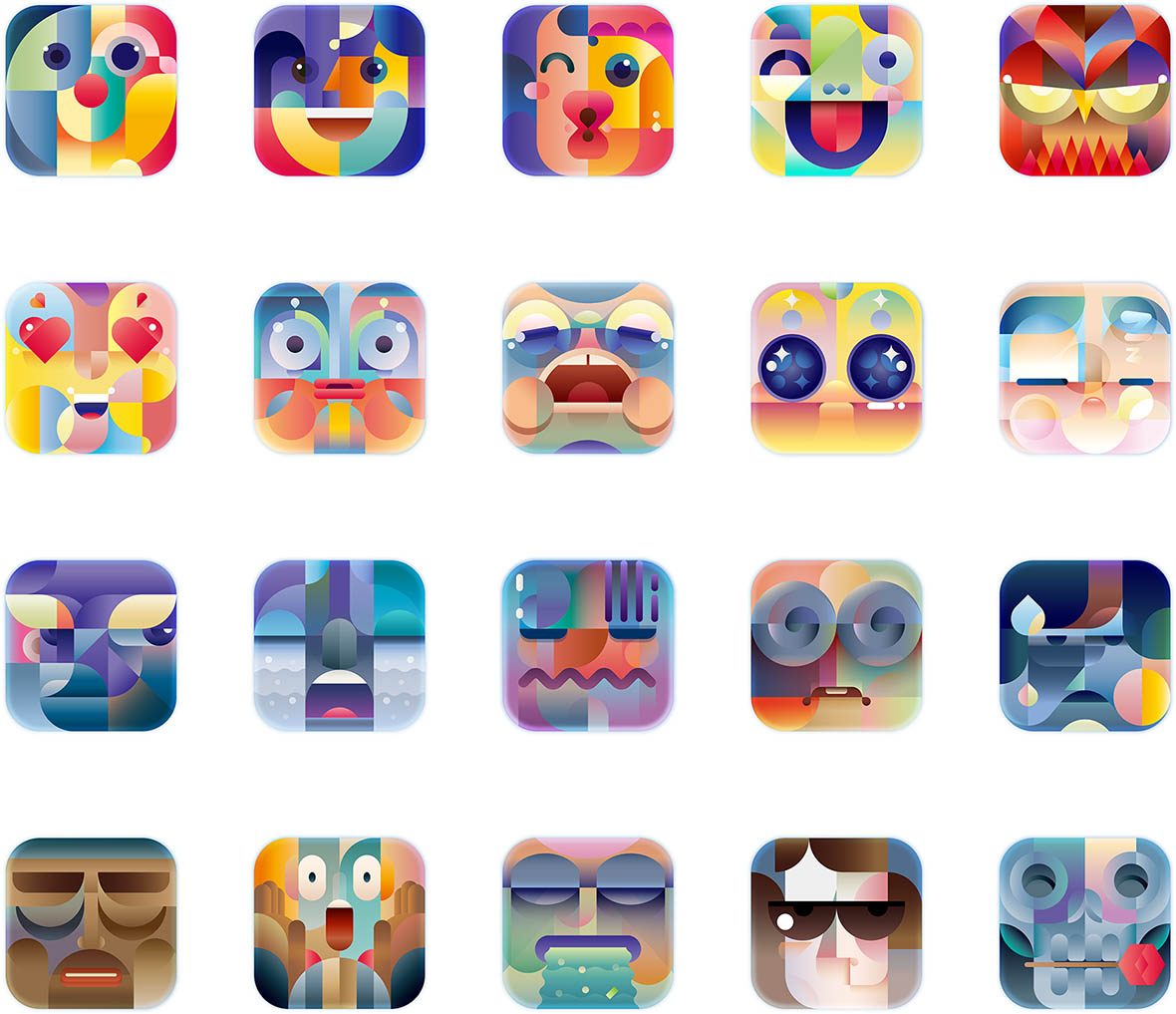
Neocha: How has abstract art influenced you and your work?
Nod: Most of my work is influenced by abstract art. I come from a background in design, so much of my approach is defined by my observations and experiences from graphic design. A decade ago, I fell madly in love with Swiss design and its clean, cold approach. I emulated this style for a period, but I wasn’t completely satisfied. I wanted to learn more about the essence of the Swiss style, so I began to retrace its history back to the 1930s, the Art Deco movement, and the Industrial Revolution. I’ve found that cleanliness, minimalism, and standardization were all principles that permeated the public consciousness at the time. By tracing history, I could better understand the sentiments of the artists that came later after the Impressionists. I was heavily influenced by Michel Duchamp, and was moved by the cold rationality of his work. I dabbled in various approaches, from researching different color combinations of the Renaissance period, to channeling the legacy of pop art. Although my work doesn’t exactly fit into the realm of abstract art, I’m still fond of and influenced by it.
Neocha: 你的作品中有很多抽象主义表现手法,是否受到这方面的影响?这其中是什么让你着迷?
Nod: 一部分是。我是设计出身,所以我的很多艺术主张来自于平面设计的观察和尝试。十年前,我疯狂的喜欢瑞士的设计,工整、常规、冷静但细节处的小改变让画面充满趣味。我模仿了一阵子,但觉得不过瘾,我想知道他们为什么这么做,这个源头到底在哪里,就这样一步一步向前倒,一直追到30年代,追到Art Deco,追到工业时代的早期,发现人类对工整的、简洁的、制式的需求其实是源于所谓的共同理想和时代标准。在追溯的过程中,我也搞清了印象派之后艺术家们在创作中自我诉求,其中杜尚对我的影响最大,“冷静的趣味”每次都能将我活捉。我参考了很多艺术形式,在配色技巧上我参考了文艺复兴时期的,在画面处理方式上也有波普的影子,我做不到抽象主义中的“顽皮”,但很喜欢。
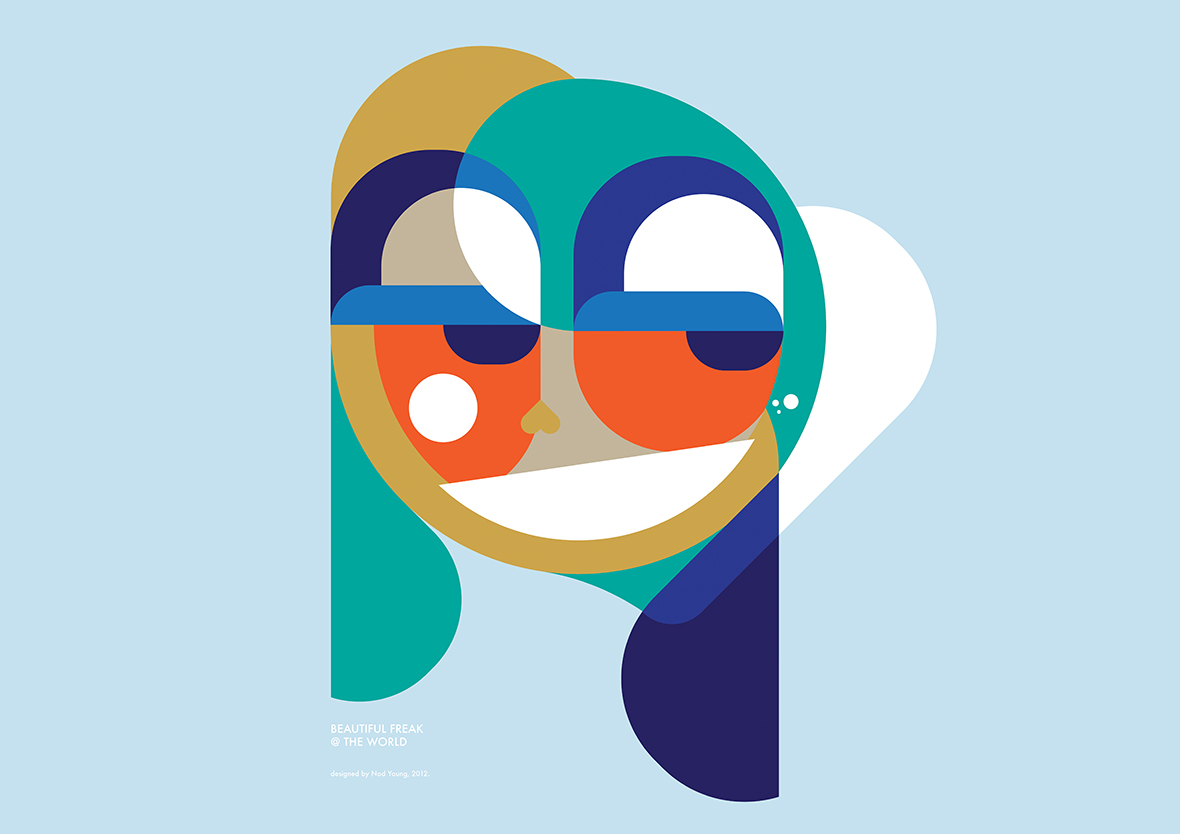
Neocha: A designer’s role is very different from that of an artist. As someone who embodies both of these roles, do you ever feel conflicted?
Nod: A designer gives answers, while an artist poses questions. But the designer doesn’t have to answer the artist’s questions, and neither does the artist have to pose his questions to the designer. That’s why I think there’s no conflict between these two roles. To me, it’s all about creativity. As a designer, I’m responsible to my clients to provide them with intelligent solutions to their problems. But as an artist, I’m responsible to myself only – I have nobody to rush me with deadlines, and my conscience is the only judge. I can use whatever methods I like to create my work, without the need to resort to quick, clever, or flashy solutions.
Neocha: 设计师和艺术家这两者在创作上是很不同的,你在这两个身份之间有感受到冲突吗?
Nod: 设计师解决问题,艺术家提出问题。但,设计师不是去解决艺术家的问题,艺术家也不是向设计师这个特定人群发问,所以,在我身上,这两者并不冲突。对我来说,都是创作:做为设计师我要向雇主负责,全盘看问题,细致巧妙动脑子,拿出聪明的方案;做为艺术家,我只需要对自己负责,没人催我,我关注内心就足够了,不耍花样,慢慢磨,用最笨的办法来,动了小聪明的念头就立刻停下来。
Neocha: What challenges have you encountered during your commercial projects?
Nod: I want to bring new and visionary design to an even wider audience, but it’s difficult since most people will gravitate towards the familiar, making everything boring and homogenous. It’s not necessarily a problem with the market or clients, but it’s a larger, more universal problem of people not having an openness and willingness to accept the unknown. Those who are comfortable with the unfamiliar are truly rare and remarkable individuals.
The biggest difference between clients is in their attitude towards the designer. Some clients have the brazen attitude of a hospital patient who likes to tell his or her doctor how exactly to perform the operation. That is becoming less and less common as the design profession advances. The clients that we take on now tend to trust us more, and I always try my best to create something that works for the both of us.
Neocha: 你为很多客户创作过商业作品。对你个人而言,什么是最具有挑战性的?
Nod: 我想把更有前瞻性的设计投入到更大众的市场中,把“同质化”这个问题干掉,这是最难的,因为大家都总是选择熟悉的东西,从设计角度上看,熟悉就意味着无聊和相似。这个问题不完全是市场问题或是客户问题,我们也有问题,如果我们掌握好非常不一样的体验和莫名其妙的熟悉感,那这个问题就解决了,当然你知道这有多难,基本上谁做到谁就是盖世英雄。
客户间的根本区别在于他们如何看待设计师的专业性,举一个不是很恰当的例子: (有些客户就像) 骄傲的患者正在指点医生如何割开他自己的肚子取出那块结石。这种情况现在很少出现了,主要是因为我们的专业水平高了,找到我们的客户都比较信任我们,所以,我们不太像是乙方,而像是甲方的人。真的,我非常感谢我现在合作的这些客户,跟几年前太不一样了,我们是朋友,是一个战壕里兄弟。我会尽我所能为客户攻下一座座城池,然后大吃大喝,唱歌到天亮。
Neocha: What projects are you currently working on?
Nod: My personal work is still centered around my Where Are You project, which is coming into its second phase. For this phase, I collected 500 childhood photos and picked 30 of the most suitable to create into new works. I can’t really talk about it in detail, but it will be complete sometime next summer. This year, I still have two products that will be released. One is a rug that has already received over 700 pre-orders, and the other is a 2016 calendar collaboration with a snack label, derived from the first phase of my Where Are You project.
Neocha: 近期有什么创作计划?
Nod: 我的个人创作还是Where Are You这个大系列中的第二章,是从我收集的500张志愿者小时候的照片中摘选(不是优选,因为都很好,只是部分更适合)其中30张,然后创作成新的作品。细节不便透露,做好要明年夏天了。今年年底前我还有两个小产品会上:一个是地毯,现在网上预订的人超过700了;另一个是跟加餐面包合作的2016年的年历,是Where Are You第一章的艺术衍生品。
